Begonias are stunning, resilient flowers that thrive in various locations. If you’re planning to introduce begonias to your garden, there are a few key factors to consider to ensure their successful growth.
These plants are known as the queens of the shade. With a wide variety of colorful options, begonias are tender perennials. This means they don’t tolerate frost well and often don’t survive beyond one growing season. Despite this, they are beautiful and diverse, offering a suitable choice for any gardener, regardless of your gardening goals.
Begonias are easy to grow and can be planted as annuals in gardens or containers. They also make excellent houseplants, and some varieties are hardy enough for gardeners in lower zones.
Begonias are popular because of their vibrant colors and ease of maintenance. In this guide, we’ll explore how to plant, grow, and care for begonias, as well as dive into the various types of begonias and their uses. Let’s discover the world of begonias!
Cultivation
Begonias are technically short-lived tender perennials and have been cultivated for centuries. With over 1,000 species, they offer a wide range of choices.
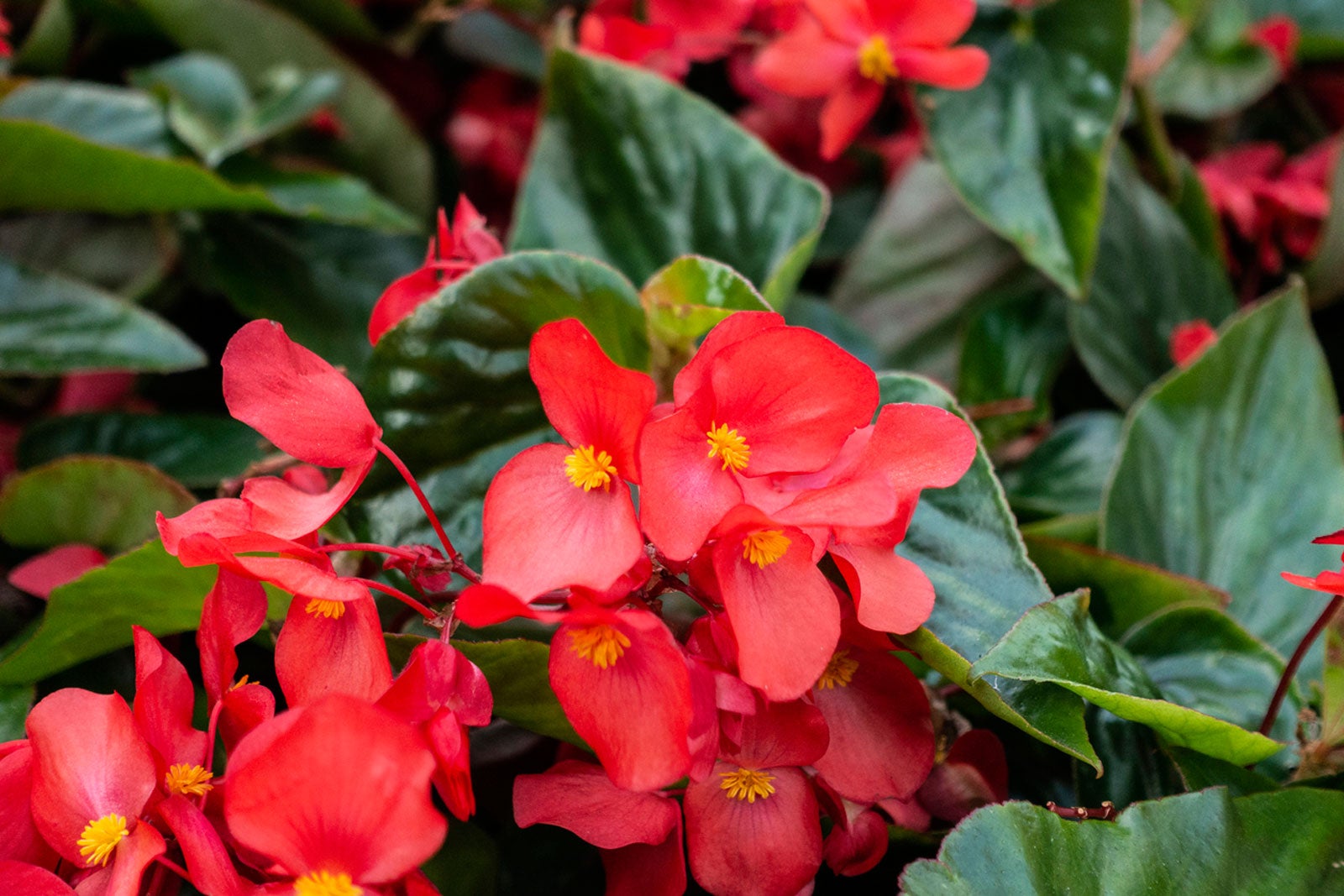
There are five main types of begonias: fibrous, tuberous, rhizomatous, and hardy. This variety makes begonias one of the most versatile plant genera, with something for everyone, whether you’re an outdoor gardener or a houseplant enthusiast.
Propagation
There are several ways to propagate begonias. Below are some common methods:
Purchasing Plants
One of the simplest ways to grow begonias is to buy fully-grown plants from a garden center. You’ll find a variety of types, such as wax, tuberous, or hanging begonias, when the annuals come in. Choose a type that fits your needs.

For houseplant varieties like Rex or Dragon Wing begonias, check the indoor section of the garden center. Local florists, including those in grocery stores, often carry begonias such as Rieger and Rex begonias.
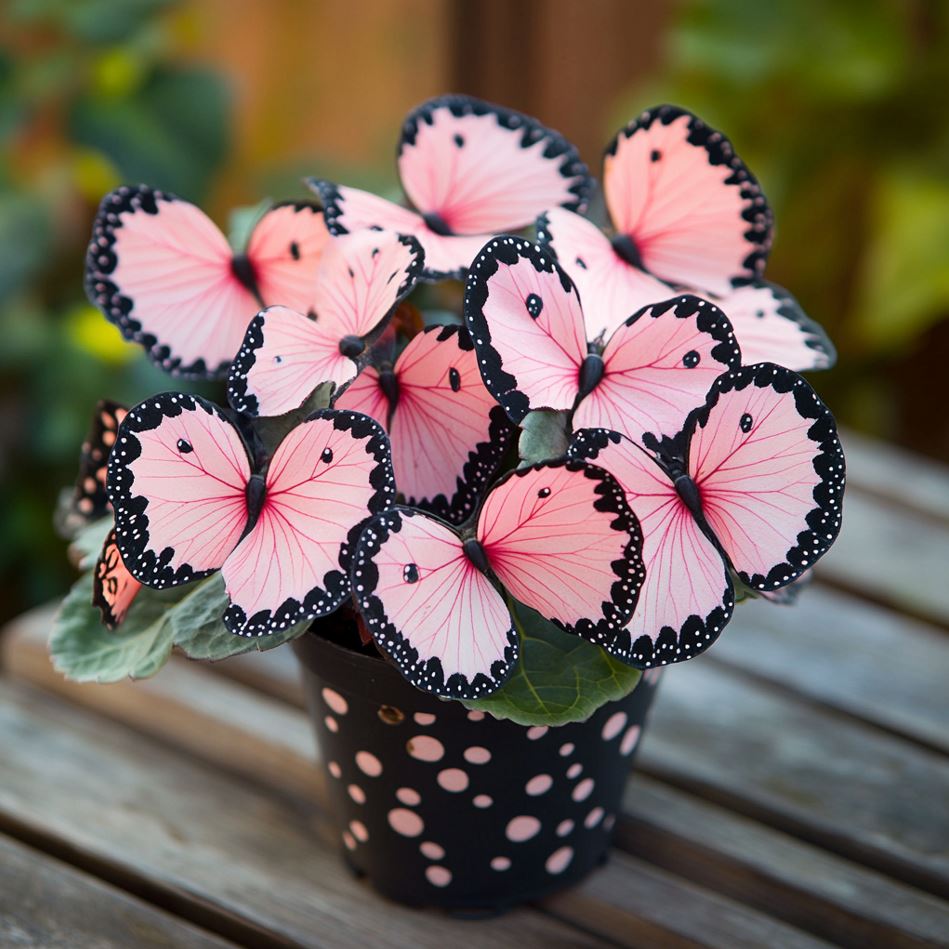
Seeds
Growing begonias from seeds is one of the more challenging but cost-effective methods. Wax and fibrous begonias are the easiest to start from seed.
Start your begonias indoors about 12 weeks before the final frost date in your area. You can use seed trays with domed lids or even repurpose plastic containers like those used for take-out or berries. Ensure the containers have drainage holes.
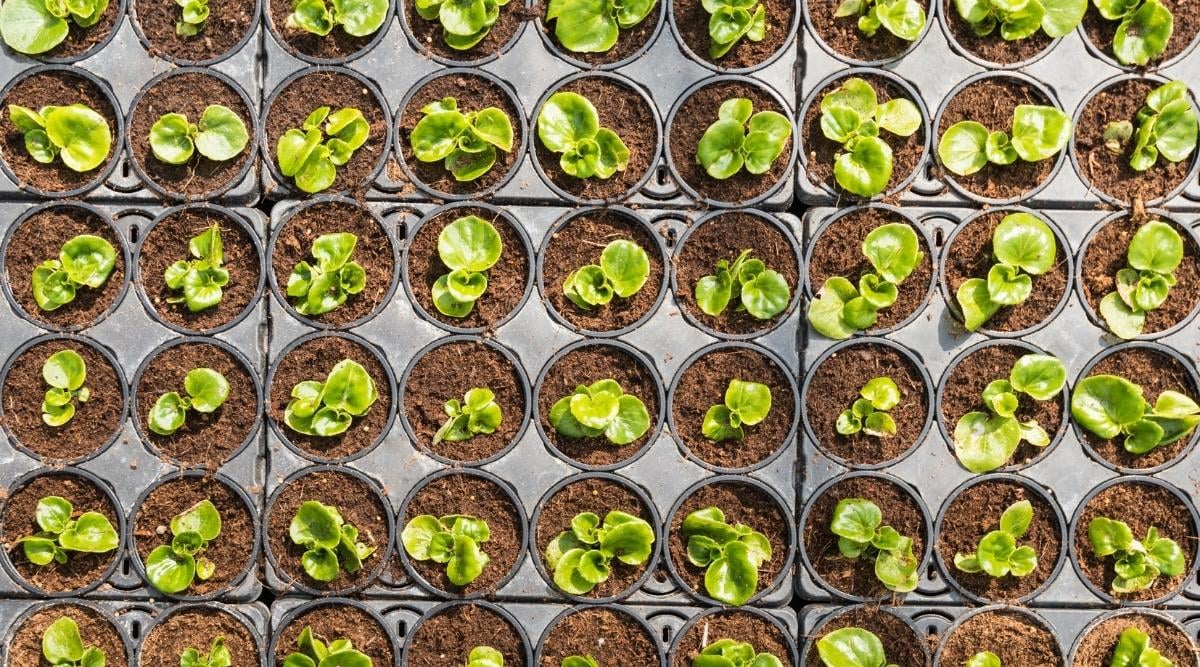
Fill the containers with a soilless seed-starting mix or potting soil, and pre-moisten it until it feels like a wrung-out sponge. Sprinkle the tiny begonia seeds on top of the soil. They need light to germinate, so don’t cover them with more soil. Lightly mist them with water, place the lid on, and keep them in a location with bright, indirect light.
Begonia seeds often benefit from grow lights to help them sprout. Be sure to mist the seeds regularly to prevent them from drying out. If they become too wet and mold develops, remove the lid for a while to let them dry.
In about 10 days, once the sprouts appear, remove the dome lid and place them in direct sunlight, either by a south-facing window or under grow lights.

If you’ve planted too many seeds, thin them out by pinching off the weaker seedlings, ensuring the stronger ones remain undisturbed. Continue to water and care for them until the final frost date, when they can be planted outdoors.
Beware of Fake Seeds
When buying begonia seeds, make sure to get them from a reputable seller. It’s best to buy from a garden store, nursery, or a trusted seed company website. Be cautious of deals that seem too good to be true, as they often are.
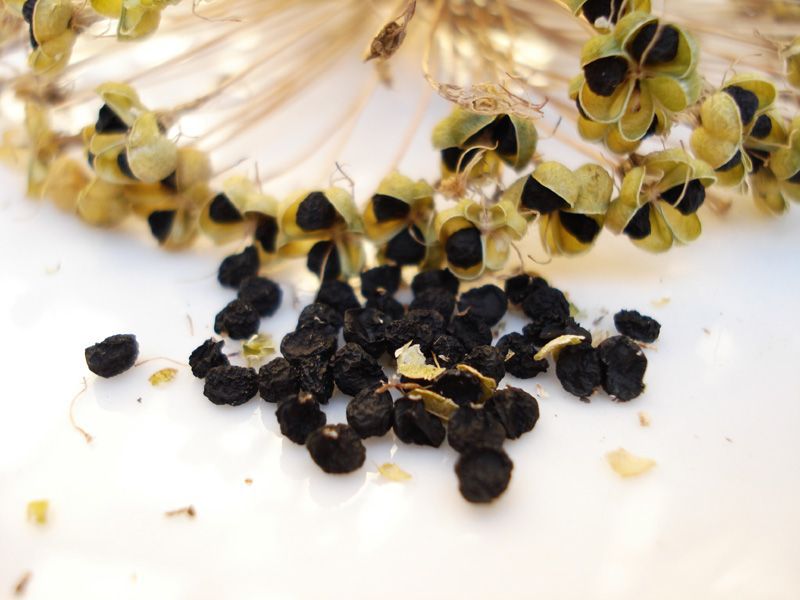
Tubers
Tuberous begonias can be planted from tubers, which you can find at garden centers in early spring, usually alongside hosta roots, alocasia tubers, and gladiolas.
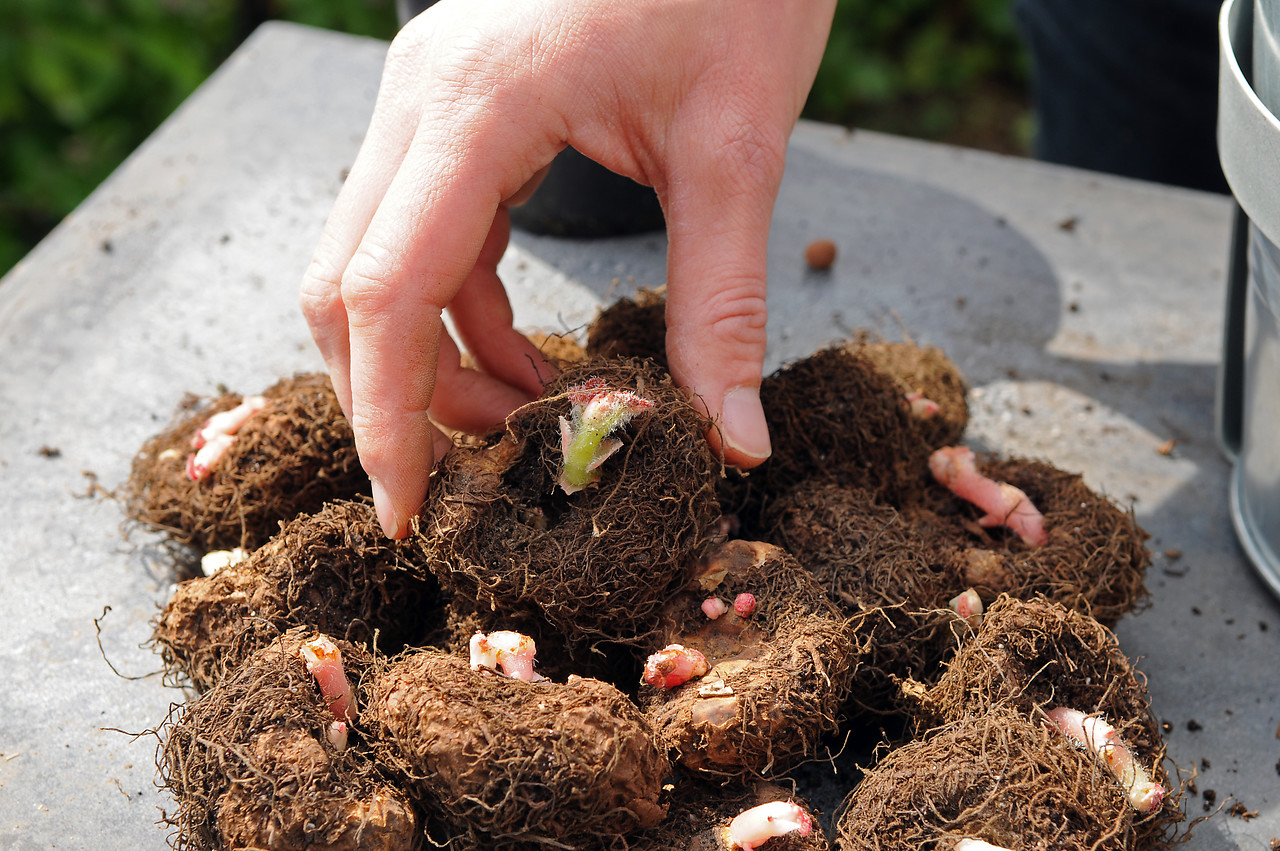
Start the tubers indoors 4-6 weeks before the final frost date. Use a container with good drainage and fill it with potting mix. Plant the tubers with the hollow side up and cover them lightly with soil. Keep the soil moist and allow the tubers to sprout. Once they begin to grow, you can prune them for more compact, densely flowering plants, or leave them unpruned for larger, more sprawling begonias. After the final frost, follow the hardening-off process before moving them outdoors.
Cuttings
Propagating begonias through cuttings is popular for houseplant varieties like Rex, Eyelash, and Ferox begonias.

Take a leaf cutting with a node (where the leaf meets the stem) and place it in water. The cutting will root and grow there almost indefinitely. However, if you plan to transition it to soil, it’s best to start the cutting directly in soil or only leave it in water until small roots appear.
To start a cutting in soil, use a container with drainage, filled with a moist, light potting mix. Dipping the cutting in rooting hormone can help speed up the rooting process, but it’s not necessary. Place the cutting in the soil and cover it with a clear bag or dome to maintain humidity. Keep it out of direct sunlight. In about a week, you’ll know it has rooted when the leaves perk up.
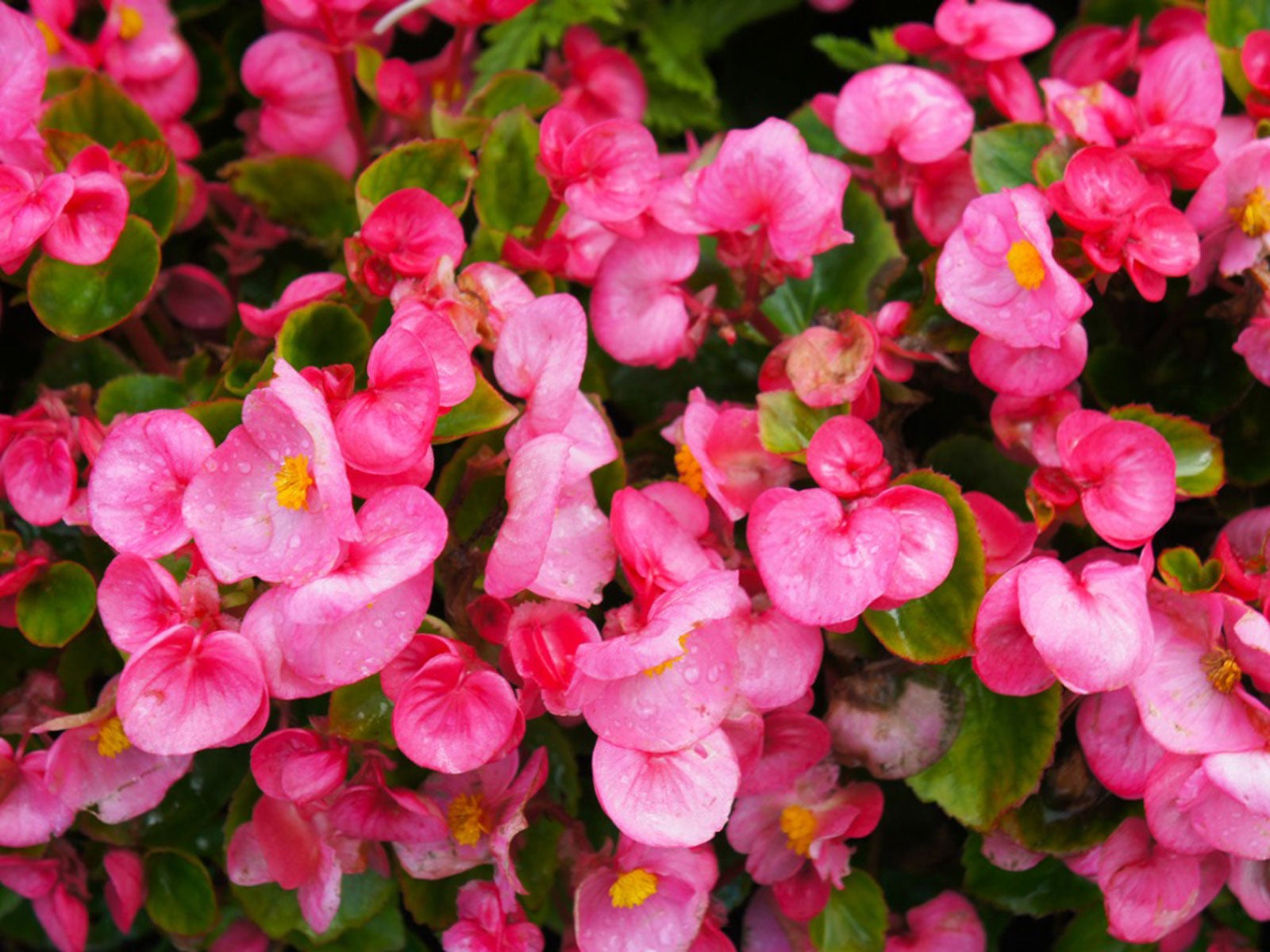
Division
Begonias can also be divided, particularly hardy varieties. To do this, dig up the begonia and find where it naturally sections. Use a sharp spade to cut off a section. Replant both the original and the new section. For other types of begonias, only divide when repotting, ensuring the plant is large enough to handle division.

Hardening Off
Hardening off is an essential step when moving indoor-grown plants outside. Since indoor plants aren’t accustomed to wind, sunlight, or rain, gradually introducing them to outdoor conditions over a week is crucial.
Start by placing your plants outside in the shade for a few hours before bringing them back indoors. Gradually increase the time they spend outside, eventually leaving them outside overnight, as long as temperatures are above 50°F (10°C). Most begonias don’t thrive in full sun, so partial sunlight is ideal during this process. Ensure they’re kept well-watered throughout.

Planting
When planting begonias, make sure to plant them at their crown (where the stem meets the roots). Avoid burying them too deep or leaving the root ball exposed. When transplanting, loosen the roots, especially if they’ve formed a dense mat. Splitting or teasing apart the roots helps them spread and grow effectively.

How to Grow Begonias
There are many types of begonias, each with its own specific needs. While some care requirements are universal, others depend on the variety. Let’s break down the essentials for growing begonias successfully.
Light
The light requirements for begonias vary depending on the variety.
- Full Sun: This is defined as six or more hours of direct sunlight, which can be too much for most begonias. However, some newer varieties, like wax/fibrous begonias with darker leaves (e.g., the Cocktail and Victory series), are more sun-tolerant. The Solenia series is another group of begonias that can tolerate full sun.
- Part Sun/Part Shade: This is ideal for most begonias, which thrive in 4-6 hours of sunlight. Morning sun combined with afternoon shade is often best, as the morning sun is gentler.
- Shade: Tuberous begonias don’t bloom well in full shade, so rhizomatous begonias, known for their striking foliage, are a great choice for shaded areas.
- Indoor Light: Indoor begonias prefer bright, filtered, or indirect sunlight. Too much direct sun can scorch their leaves, while too little will cause them to become leggy. Rotate the plant regularly for even growth.

Soil
Begonias prefer light, well-draining soil rich in organic matter. This soil mix is essential for all varieties of begonias, whether grown indoors or out.
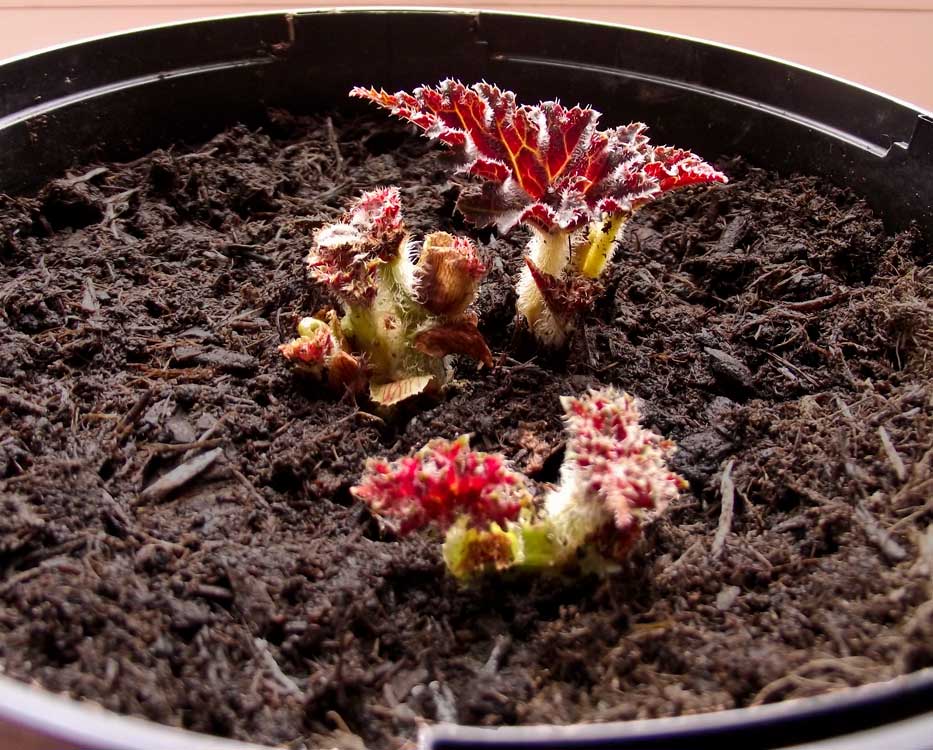
Water
Begonias like evenly moist soil but cannot tolerate soggy conditions. They prefer the soil to feel like a wrung-out sponge. Signs of overwatering include yellow, limp leaves and rotting stems, while underwatering results in crispy-edged leaves.
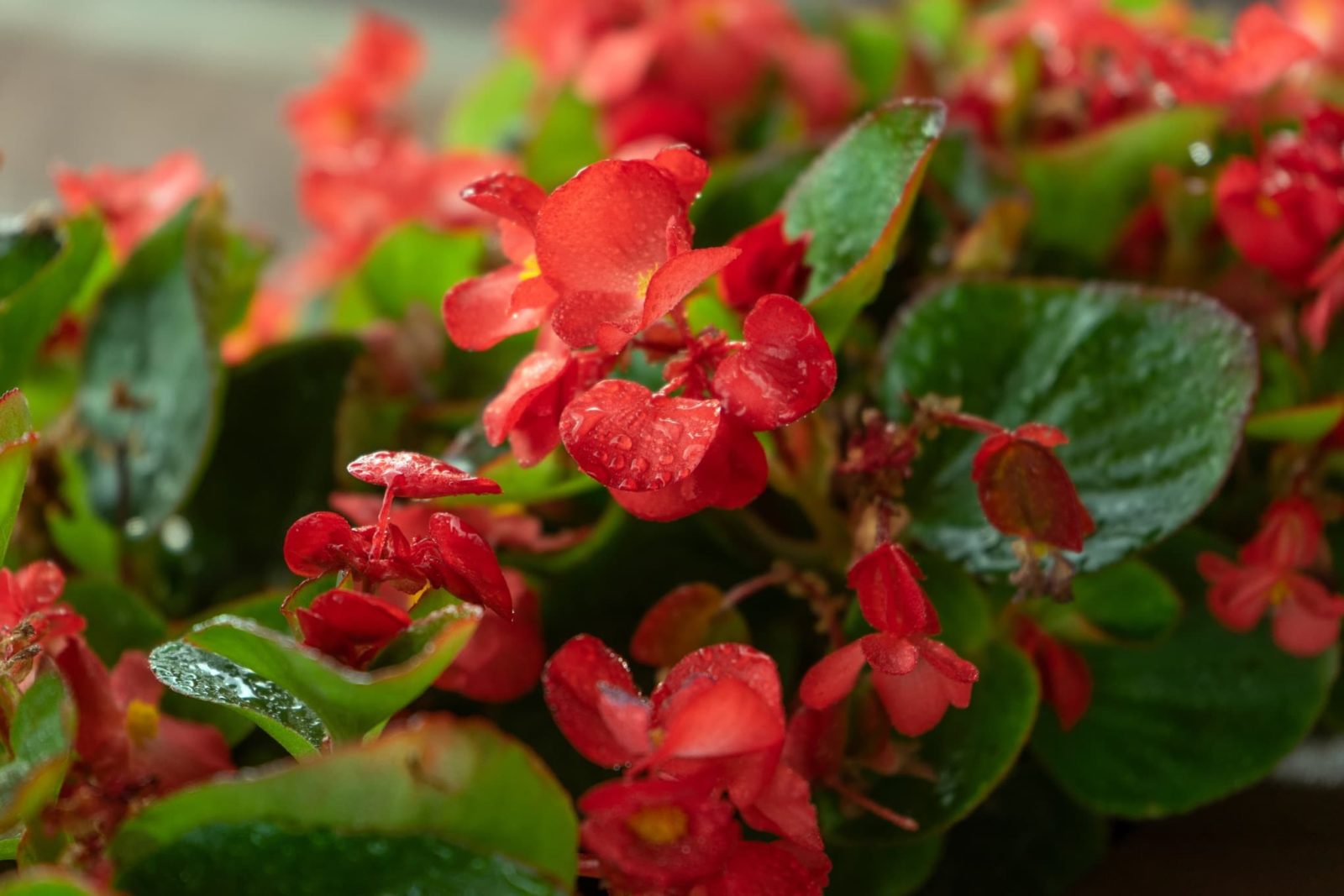
Bottom watering is especially effective for houseplant begonias. Place the container in a tray of water and allow the plant to absorb moisture from the bottom.
Fertilizer
While begonias don’t require regular fertilization, you can feed them during the growing season. Always water the plants before applying fertilizer, and choose a fertilizer suited to the specific variety you are growing.
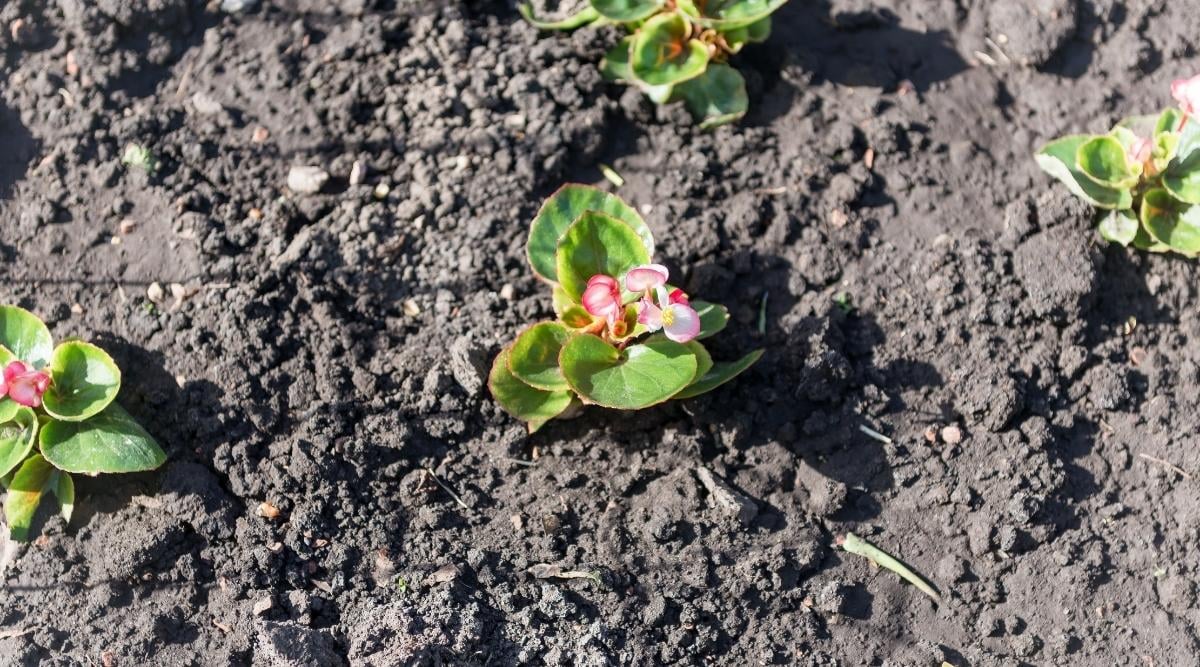
Climate and Temperature
Begonias are sensitive to cold and cannot tolerate frost. They also do not fare well in windy conditions. Select a protected area for planting.

Humidity is also important for begonias, especially indoors. You can mist indoor begonias, use a humidifier, or place them on a tray of pebbles filled with water to provide additional humidity.
Maintenance
Begonias are low-maintenance plants, but they still need some care. Remove any brown or dead flowers and leaves. You can also trim them to encourage bushier growth. For hardy begonias, cut them back in the fall once they have turned yellow.
With the right care, begonias can be a beautiful, easy-to-manage addition to your garden or home!
![A Year-Round Guide to Begonia Care and Maintenance [UK] - The Arches](https://artarch.dalatcamping.net/wp-content/uploads/2024/10/Begonia-Plant-Care-Growing-Tips.jpg)
Pests and Diseases
When begonias are grown in their ideal conditions, they typically encounter few problems with pests and diseases. However, being part of the ecosystem means they can still be affected by various issues. Here are some common pests and diseases associated with begonias.
Common Pests
- Aphids, Spider Mites, Mealy Bugs: This trio of pests can wreak havoc on your begonias. The best approach is prevention: maintain healthy plants by keeping them in ideal conditions—part sun, evenly moist soil, and light soil mix.
If you notice these pests despite your best efforts, try washing the affected plants gently under a sink faucet or with a hose. Be cautious with insecticidal soap, as begonias can be sensitive to it; always test on a single leaf first and wait 24 hours to see how it reacts. Alternatively, you can use horticultural oil for pest control.
- Slugs and Snails: These garden pests thrive in overly moist conditions, which can sometimes occur during heavy rains. The most effective solution is to sprinkle slug bait weekly or after a rain, which you can find at garden centers. This bait attracts and eliminates slugs effectively.
Other methods include handpicking them, using rings of crushed eggshells around the plants, or setting out trays of beer to lure them in. However, slug bait tends to be the most reliable option.

Common Diseases
- Powdery Mildew: This fungal disease commonly affects begonias. It often arises from overwatering and overcrowding. To prevent powdery mildew, ensure your begonias are spaced apart for airflow and maintain evenly moist (not soggy) soil. Watering from the bottom is preferable, and allowing foliage to dry can help deter mildew.
If you encounter powdery mildew late in the season, consider removing the affected plants and starting fresh next year. For houseplants or early-season infestations, a copper fungicide spray can help manage the problem.
- Root Rot: Root rot is a direct result of overwatering or using pots without proper drainage. Ensure your containers have ample drainage holes to allow excess water to escape. Signs of root rot include yellowing leaves and mushy stems.
The remedy for root rot involves repotting the plant in fresh potting soil. Carefully remove the begonia from its pot, discard any mushy roots, rinse the healthy roots, and repot it in a new, well-draining soil mix (adding extra perlite can enhance drainage).
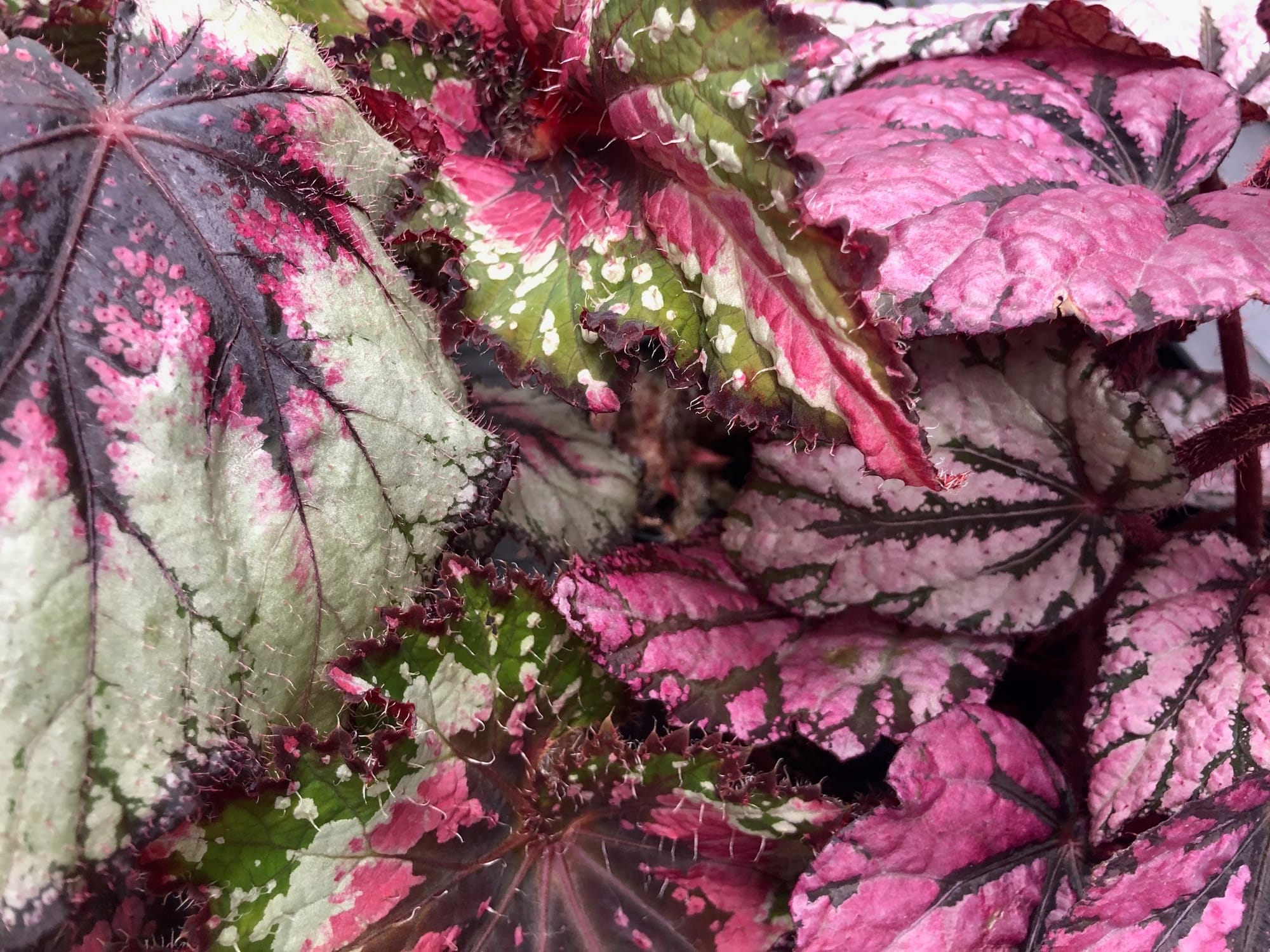
Final Thoughts
Begonias rank among the largest and most versatile plants for both gardeners and houseplant enthusiasts. With their diverse colors, shapes, and sizes, they adapt to various light conditions (depending on the variety). These qualities contribute to the begonia’s status as a classic, beloved plant cherished by plant lovers everywhere.
